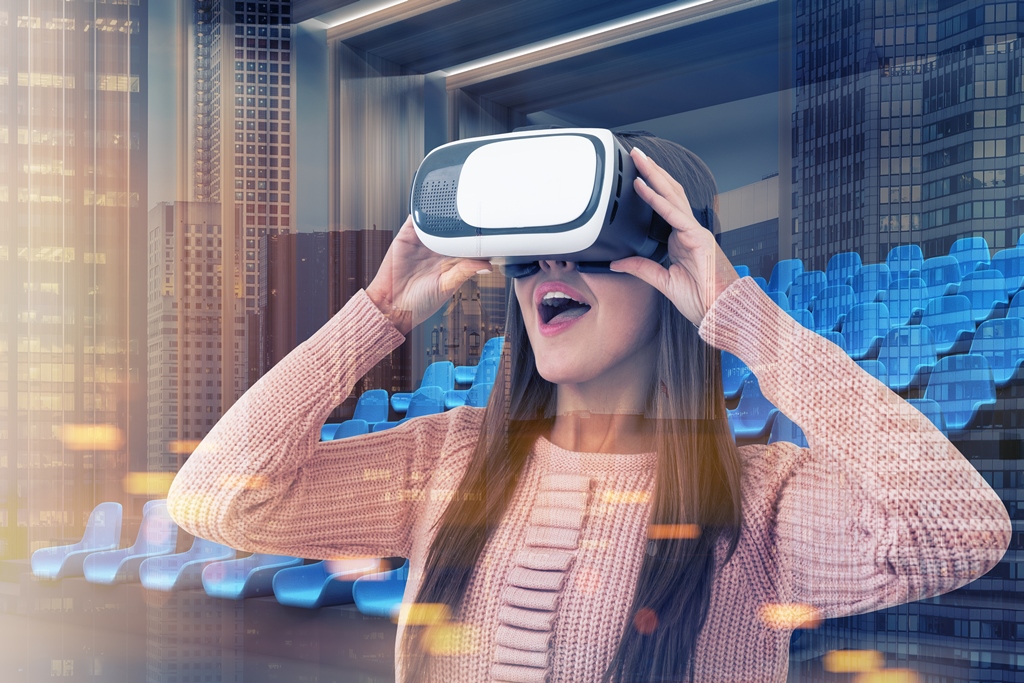- 7 August 2024
- 159
The Future of VR in Film and TV

Introduction
The entertainment industry is no stranger to technological advancements, and the Future of VR in Film and TV stands as one of the most exciting developments on the horizon. Virtual Reality (VR) has the potential to revolutionize how stories are told and experienced, offering audiences a level of immersion previously unimaginable. This article explores the transformative potential of VR in film and television, examining current trends, technological advancements, and the future landscape of this burgeoning field.
The Rise of VR Technology

Virtual Reality technology has come a long way since its inception. Early iterations were cumbersome and limited in scope, but today’s VR headsets are more sophisticated, offering high resolution displays, precise motion tracking, and increasingly realistic graphics. Companies like Oculus, HTC, and Sony have made significant strides in making VR more accessible and affordable for consumers, paving the way for its integration into mainstream entertainment.
Current Applications in Film and TV

-
360 Degree Videos and VR Films
- Narrative Innovation: Directors and storytellers are experimenting with 360 degree videos, allowing viewers to explore scenes from every angle. This form of storytelling breaks away from traditional linear narratives, offering a more interactive experience.
- Immersive Documentaries: VR is being used to create immersive documentaries that place viewers in the heart of the action, whether it’s exploring remote locations or experiencing historical events firsthand.
-
Virtual Sets and Production
- Cost Efficiency: VR technology is being utilized in the production phase, allowing filmmakers to create virtual sets. This not only reduces costs but also allows for more creative freedom in designing intricate environments.
- Pre Visualization: Directors can use VR to pre visualize scenes, helping them plan shots and camera movements more effectively.
-
Interactive TV Shows and Experiences
- Choose Your Own Adventure: Interactive TV shows that allow viewers to make choices that affect the storyline are gaining popularity. VR can enhance these experiences by making the viewer feel like an active participant in the narrative.
- Live Events and Performances: VR is being used to broadcast live events, such as concerts and sports, in a way that makes viewers feel as though they are part of the audience.
Technological Advancements Driving the Future

-
Improved Hardware
- Higher Resolution Displays: The development of higher resolution displays ensures that VR experiences are visually stunning and free from the screen door effect.
- Wireless VR: The move towards wireless VR headsets enhances mobility and comfort, making it easier for users to engage with VR content for extended periods.
-
Enhanced Interactivity
- Haptic Feedback: Advances in haptic technology allow users to feel physical sensations in VR, adding another layer of realism to the experience.
- Eye Tracking: Eye tracking technology can be used to create more realistic interactions and improve the overall immersion of VR experiences.
-
Content Creation Tools
- User Friendly Software: The development of more intuitive and accessible content creation tools is enabling a wider range of creators to produce VR content.
- AI and Machine Learning: AI is being used to create more dynamic and responsive VR environments, enhancing the storytelling potential of the medium.
Challenges and Considerations

-
Accessibility and Inclusivity
- Cost Barriers: While VR technology is becoming more affordable, it is still a significant investment for many consumers. Ensuring that VR content is accessible to a broad audience is crucial for its widespread adoption.
- Inclusivity in Content: Creating diverse and inclusive content that resonates with a wide range of audiences is essential for the future success of VR in film and TV.
-
Technical Limitations
- Motion Sickness: Some users experience motion sickness when using VR, which can limit the duration and enjoyment of VR experiences. Continued research and development are needed to mitigate these effects.
- Content Quality: Ensuring high quality content that takes full advantage of VR’s capabilities is essential. Poorly executed VR experiences can detract from the medium’s potential.
The Future Landscape

-
Mainstream Adoption
- Integration with Streaming Services: Major streaming platforms are beginning to explore VR content, which could lead to wider adoption and more mainstream acceptance.
- Collaborations with Established Studios: Partnerships between VR companies and established film and TV studios can drive innovation and bring high quality VR content to a broader audience.
-
New Storytelling Paradigms
- Hybrid Experiences: The future may see a blend of traditional and VR storytelling, where viewers can choose to experience a story in multiple formats.
- Expanded Universes: VR offers the potential to create expansive, interconnected story universes that viewers can explore in depth, providing a richer and more engaging experience.
Conclusion
The Future of VR in Film and TV is bright, with endless possibilities for innovation and creativity. As technology continues to advance and more creators embrace the medium, VR has the potential to redefine how we experience stories, making them more immersive, interactive, and engaging than ever before. While challenges remain, the continued evolution of VR technology and its integration into mainstream entertainment promises an exciting future for both creators and audiences alike.

